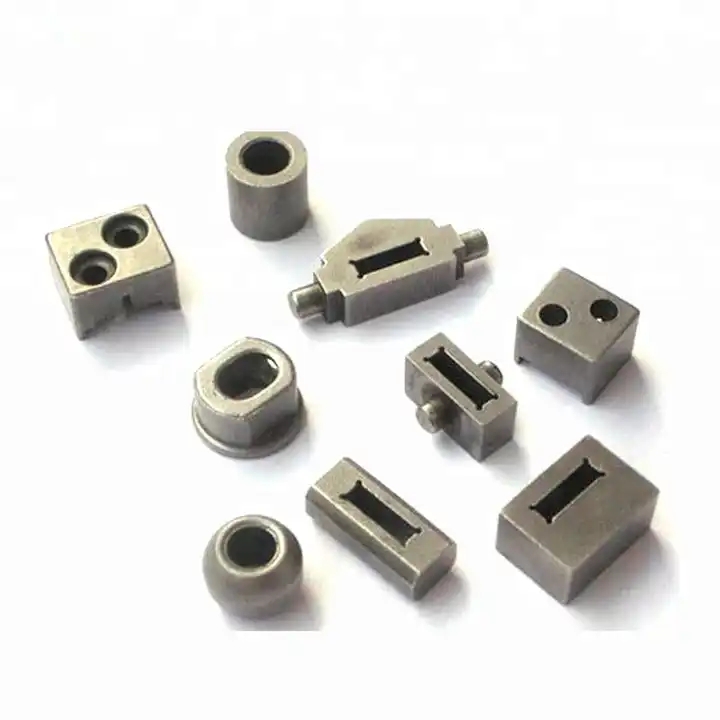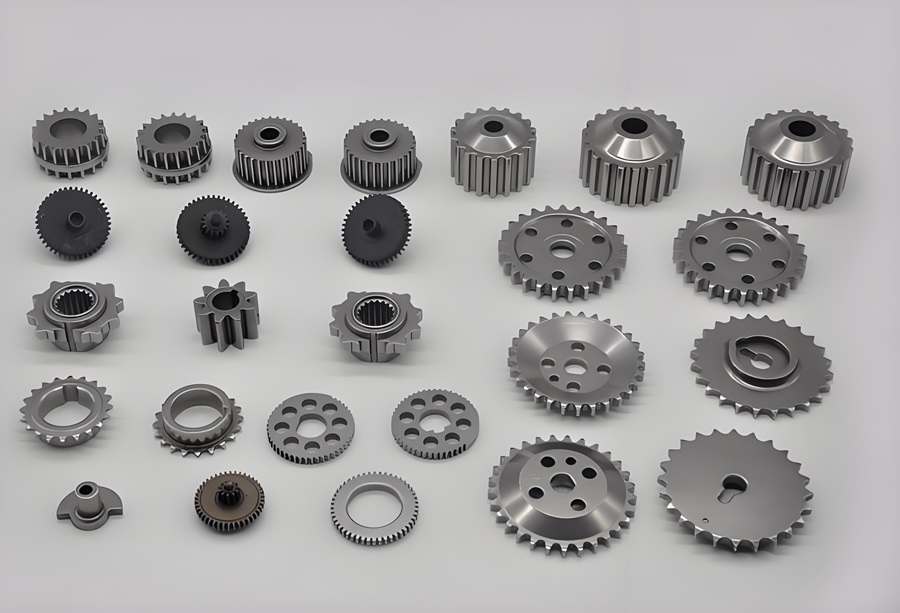Sintered Parts in Manufacturing Industry – An Insider’s Guide

Sintered parts are components created through a manufacturing process called sintering, which involves compacting and heating powdered materials—such as metals, ceramics, and plastics—without melting them. This process allows the particles to bond together, resulting in a solid mass with enhanced mechanical properties.
Sintering Process Overview
The sintering process typically consists of three main stages:
- Powder Mixing: The initial step involves blending the base metal powder with various alloying elements and additives to achieve desired material properties. This mixture is crucial for ensuring uniformity and performance in the final product.
- Compacting: The mixed powder is then compacted into a mold using high pressure (ranging from 200 to 1,500 MPa). This creates a “green part,” which has some mechanical strength but is not yet fully solidified.
- Sintering: The compacted green part is heated in a controlled atmosphere furnace at temperatures below the melting point of the primary metal. This heat facilitates the diffusion of particles, allowing them to bond and grow together, significantly increasing the part’s strength and density. The sintering temperature typically ranges from 750 to 1300°C, depending on the material used.
Main Types of Sintered Powder Metallurgy Materials
Sintered powder metallurgy materials come in various types, each with unique properties suitable for different applications. Below are some common types of sintered materials:
- Iron-Based Materials
- Typical Materials: Iron, carbon steel, alloy steel.
- Characteristics: High strength, good wear resistance, and relatively low cost.
- Applications: Widely used in automotive parts, gears, bearings, and structural components.
- Stainless Steel
- Typical Materials: 304, 316, 410 stainless steels, etc.
- Characteristics: Strong corrosion resistance, good mechanical properties, and heat resistance.
- Applications: Medical instruments, food processing equipment, and automotive exhaust systems.
- Copper-Based Materials
- Typical Materials: Copper, bronze (copper-tin alloy), brass (copper-zinc alloy).
- Characteristics: Excellent electrical and thermal conductivity, good corrosion resistance.
- Applications: Electrical and electronic components, radiators, and bushings.
- Aluminum-Based Materials
- Typical Materials: Pure aluminum and aluminum alloys.
- Characteristics: Lightweight, good electrical and thermal conductivity, strong corrosion resistance.
- Applications: Aerospace components, electronic device enclosures, and automotive parts.
- Titanium-Based Materials
- Typical Materials: Pure titanium and titanium alloys (e.g., Ti-6Al-4V).
- Characteristics: High strength-to-weight ratio, good corrosion resistance, excellent biocompatibility.
- Applications: Medical implants, aerospace components, and chemical processing equipment.
- Tungsten-Based Materials
- Typical Materials: Tungsten and tungsten alloys.
- Characteristics: High density, extremely high melting point, and hardness.
- Applications: High-temperature arc electrodes, cutting tools, and radiation shielding materials.
- Nickel-Based Materials
- Typical Materials: Nickel-based superalloys, such as Inconel series.
- Characteristics: Excellent high-temperature resistance and strong corrosion resistance.
- Applications: Aircraft engines, gas turbines, and nuclear reactor components.
- Molybdenum-Based Materials
- Typical Materials: Molybdenum and molybdenum alloys.
- Characteristics: High strength, high melting point, excellent thermal conductivity.
- Applications: High-temperature furnace parts and electronic devices.
- Cemented Carbides
- Typical Materials: Tungsten carbide (WC) combined with cobalt or nickel.
- Characteristics: Extremely high hardness and wear resistance, suitable for high-pressure and high-wear environments.
- Applications: Cutting tools, drilling equipment, and molds.
These sintered powder metallurgy materials are widely used in various industries, such as automotive, aerospace, electronics, medical, and industrial machinery, meeting diverse application needs.
Applications of Sintered Parts
Sintered parts are widely used across various industries due to their ability to produce complex shapes with high precision and strength. Common applications include:
- Automotive: Components like gears, actuators, and brake systems.
- Aerospace: Parts such as turbine blades and fuel system components.
- Biomedical: Implants and surgical instruments.
- Industrial Machinery: Bearings, bushings, and pump components.
- Consumer Goods: Kitchenware, tools, and fashion accessories

Benefits of Sintering
The sintering process offers several advantages:
- Cost-Effectiveness: It allows for mass production with low per-part costs.
- Material Efficiency: Minimal waste is produced compared to traditional machining methods.
- Design Flexibility: Complex geometries can be achieved that are difficult or impossible to create through other manufacturing techniques.
- High Mechanical Properties: Sintered parts can achieve high strength and durability, making them suitable for demanding applications.

In summary, sintered parts are integral to modern manufacturing, leveraging the unique benefits of powder metallurgy to create high-performance components across a range of industries.


